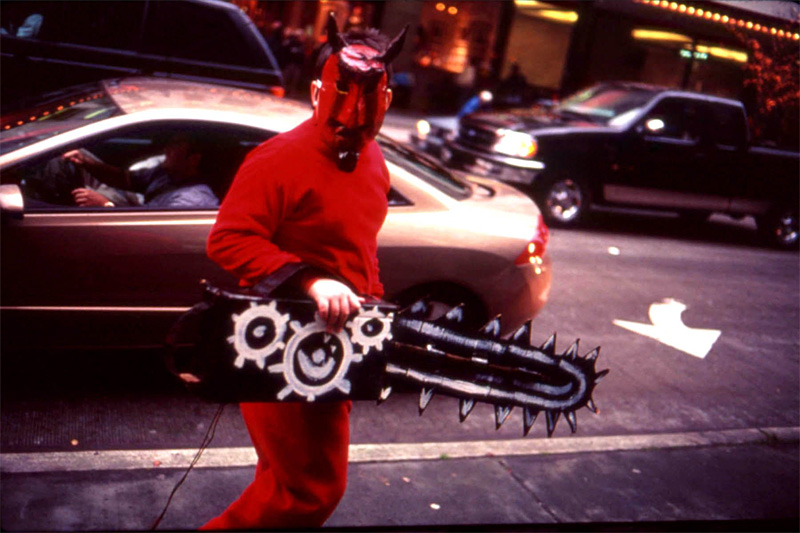Ten years later, what exactly did the WTO protests accomplish? Paul Schell and Norm Stamper lost their jobs after the tear gas wafted away. Charlize Theron later starred in the Crash-like melodrama Battle in Seattle. But if we’re not mistaken, globalization continues even more inexorably; and the economy was far better in those angry late ’90s than it is today. The World Trade Organization has learned to hold its secret cabals in small, remote locations, far from turtle-costumed marchers and the dreaded Eugene anarchists. Here, depending on your perspective, the WTO showdown either tarnished or strengthened the Seattle brand. We’re a trade-dependent port city, full of multinational corporations and international workers. The protests were fun, in an attention-getting, “Look at me!” kind of way, a means of proving our radical street cred. Yet the photographs on display by Allan Sekula suggest that the image of rebellion will prove more durable than any political reform. In the 10 frames collected in “Waiting for Tear Gas,” he shot in blurry color, close to the ground, not trying to make sense of the chaotic scenes. Protesters crouch on the pavement; cops march in their Darth Vader riot gear; a red devil wielding a chainsaw scurries by—whether in retreat or defiance, we can’t tell. If anything, these images are clichés—distillations from our memories first-hand, on TV, or from the movie. Sekula remembers them for us, even if we can’t quite recall what we were marching about.
The Fussy Eye: Riot Lite








